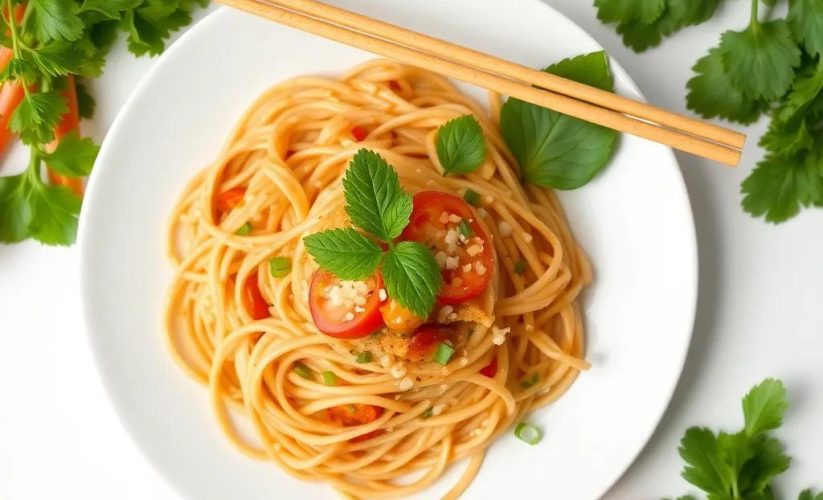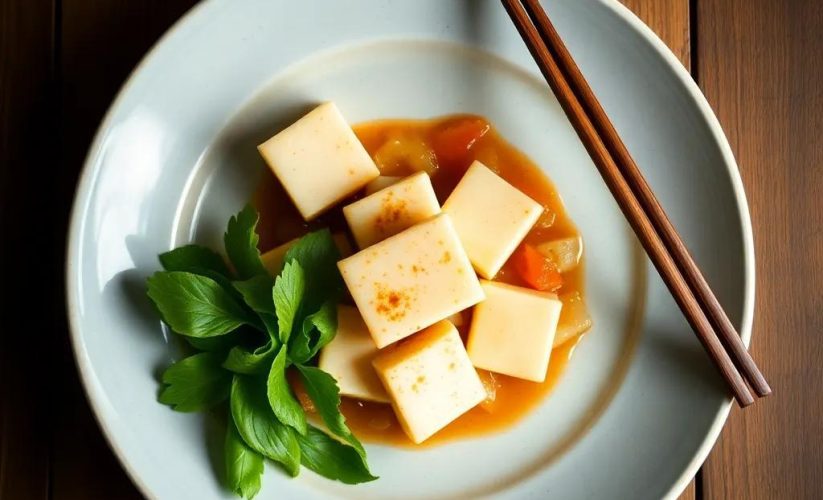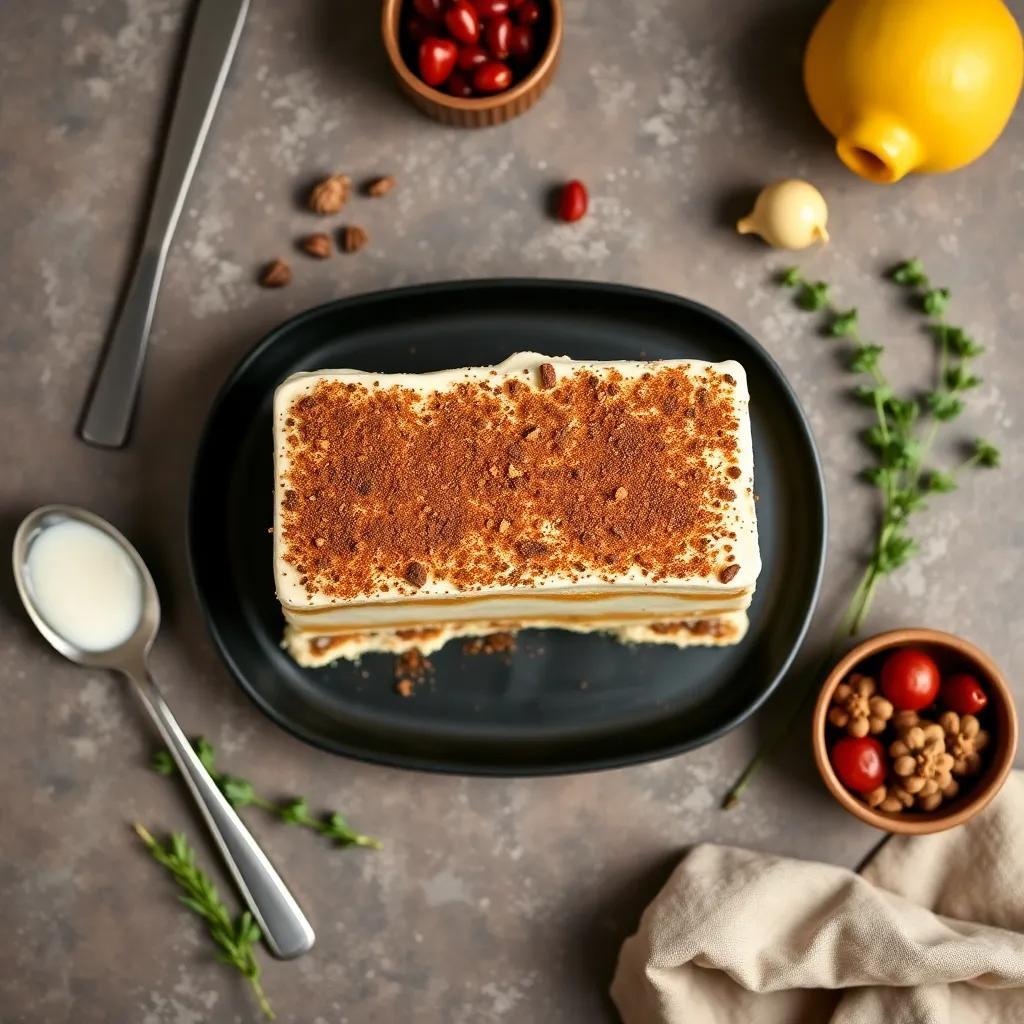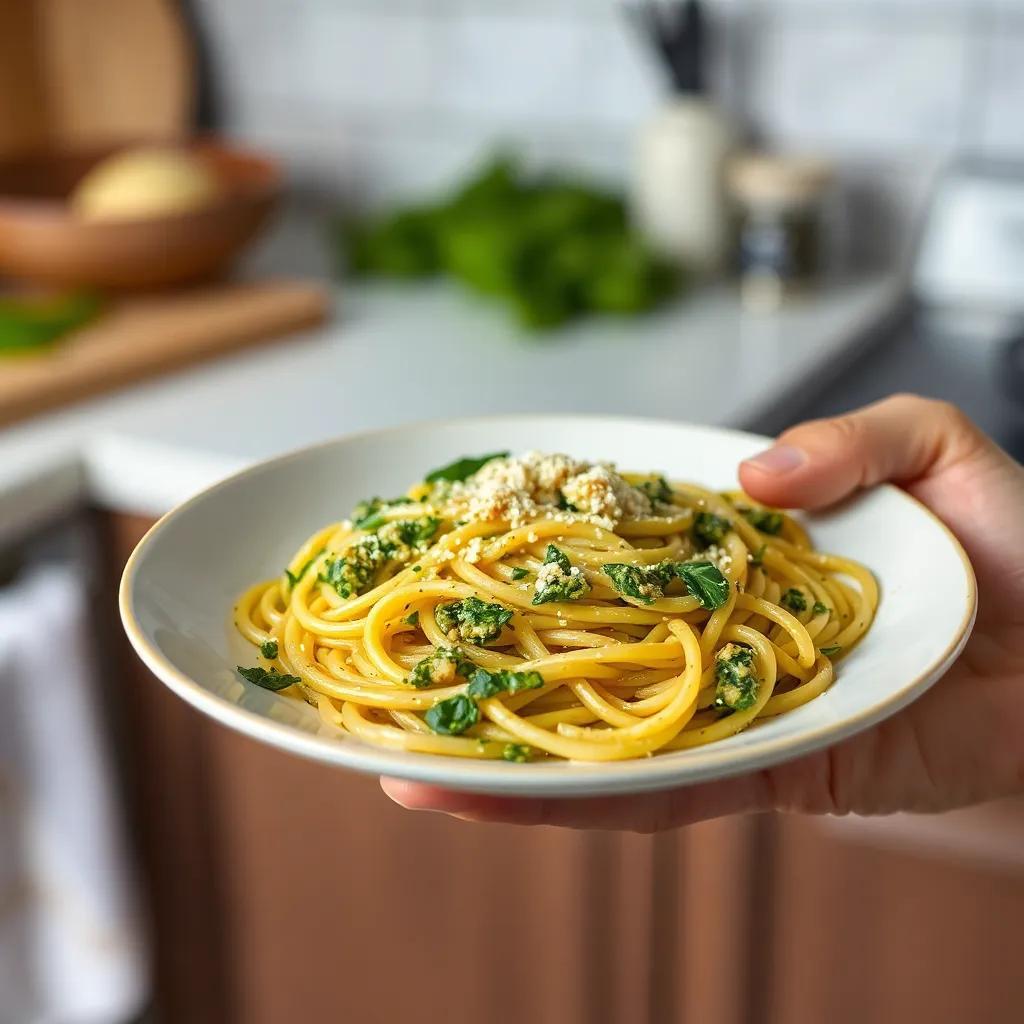Creamy Fettuccine Alfredo Recipe: Easy, Rich & Irresistible!
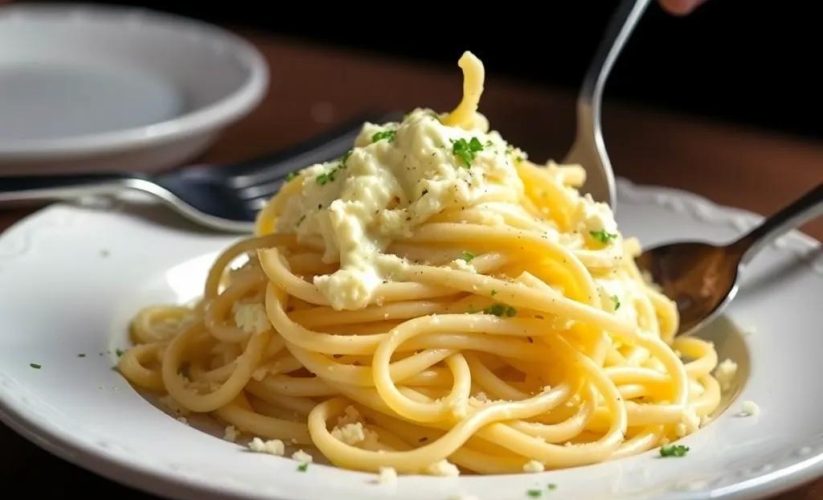
Creamy Fettuccine Alfredo Recipe: Easy, Rich & Irresistible!
🌍 Cuisine: Italian
⚙️ Difficulty: Easy
Ingredients
Nutrition Facts
650
Instructions
- Bring a large pot of salted water to a boil. Add the fettuccine pasta and cook according to package instructions until al dente. Drain and set aside, reserving 1 cup of pasta water.
- In a large skillet over medium heat, melt the butter.
- Add the minced garlic and sauté for about 1 minute until fragrant but not browned.
- Pour in the heavy cream and stir to combine. Bring to a gentle simmer, stirring occasionally, and cook for 4-5 minutes until slightly thickened.
- Reduce heat to low and slowly whisk in the grated Parmesan cheese until the sauce is smooth and creamy.
- Season the sauce with salt and freshly ground black pepper to taste.
- If the sauce is too thick, gradually add reserved pasta water a little at a time until desired consistency is reached.
- Add the cooked fettuccine to the skillet and toss to coat the pasta evenly with the Alfredo sauce.
- Cook together for another 1-2 minutes, allowing the pasta to absorb the flavors.
- Remove from heat and garnish with chopped fresh parsley, if desired.
- Serve immediately while hot for the best creamy texture and flavor.
Serving Suggestions
- Serve with a side of garlic bread or crusty Italian bread to soak up the sauce.
- Pair with a fresh green salad tossed in a light vinaigrette to balance the richness of the Alfredo.
- Add grilled chicken or sautéed shrimp on top for extra protein.
- Sprinkle extra Parmesan cheese or red pepper flakes for added flavor and spice.
- Complement the meal with a glass of crisp white wine such as Pinot Grigio or Chardonnay.
- Garnish with fresh basil leaves or extra parsley for a pop of color and freshness.
- Serve with roasted or steamed vegetables like broccoli or asparagus to add texture and nutrition.
Table of Contents
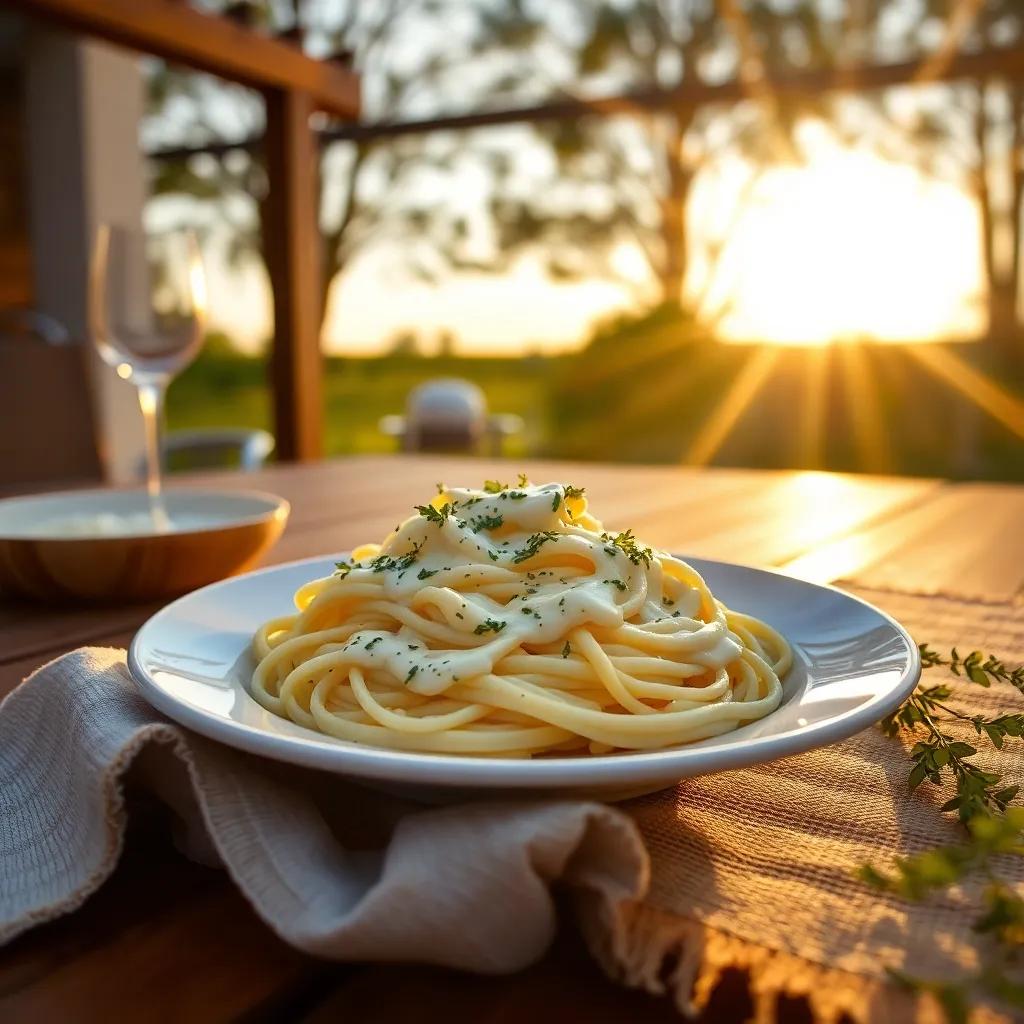
Intro
There’s something undeniably comforting about a bowl of creamy fettuccine Alfredo—a dish that seamlessly combines simple ingredients into a luscious and satisfying meal. Whether you’re craving a quick weeknight dinner or planning a cozy gathering with friends, this recipe delivers rich, velvety sauce that clings perfectly to tender pasta, making every bite pure indulgence.
What makes this recipe especially delightful is how effortlessly it comes together; you don’t need to be an expert chef to achieve that classic, restaurant-quality flavor right at home. The balance of buttery smoothness and the subtle hint of garlic invites you to slow down and savor the moment, turning an ordinary dinner into something a little more special.
Perfect for everything from casual family meals to elegant date nights, Creamy Fettuccine Alfredo is a versatile dish that pairs beautifully with crisp salads, crusty bread, or simply enjoyed on its own. Its richness and simplicity make it a crowd-pleaser that can warm up any table and mood alike.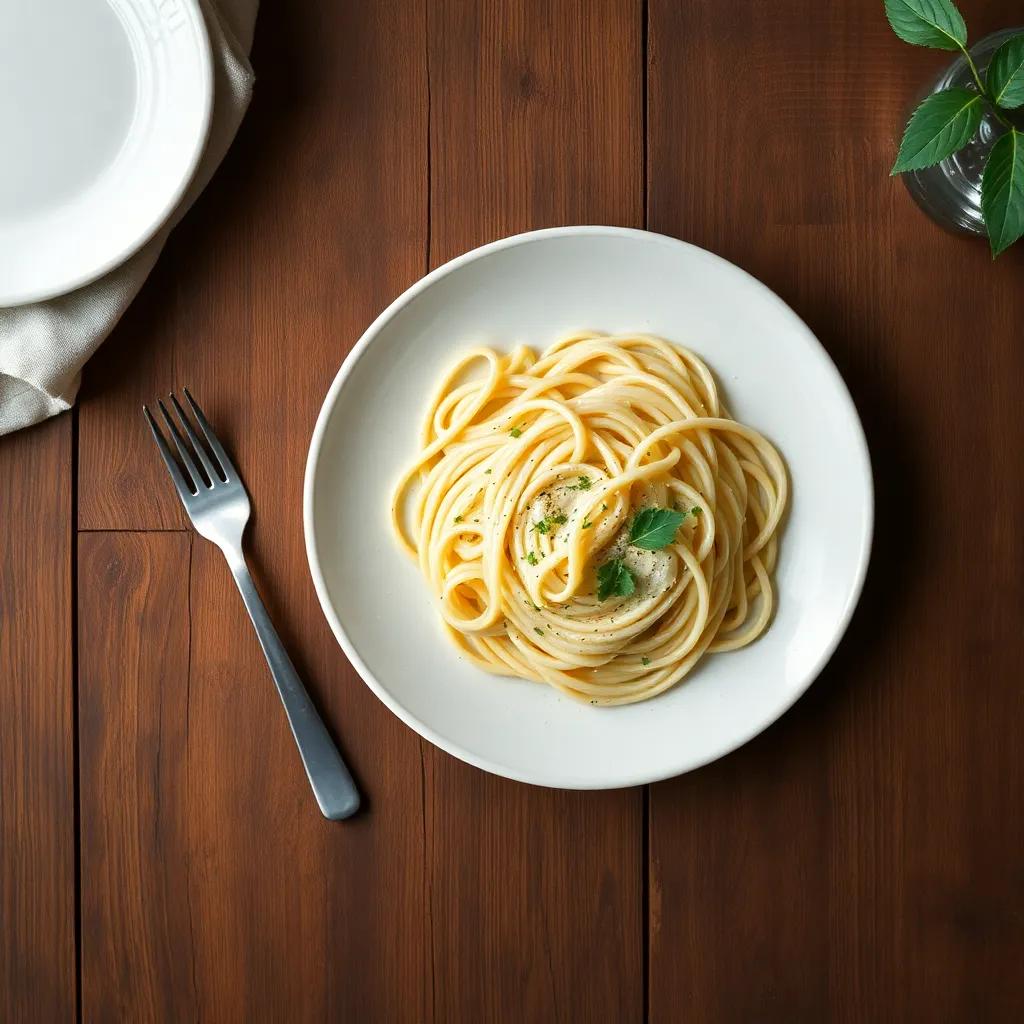
Ingredient Notes
When it comes to crafting the perfect creamy Fettuccine Alfredo, a few key ingredients truly make all the difference. Understanding their qualities and selecting the right versions can elevate your dish from good to unforgettable.
Freshly Grated Parmesan Cheese:
Parmesan isn’t just any cheese here—it’s the rich backbone of the sauce’s flavor and texture. Opt for a high-quality Parmigiano-Reggiano whenever possible; its nutty, savory depth melts into the cream beautifully, creating that signature smoothness. Avoid pre-grated or powdered Parmesan cheeses, as they often contain anti-caking agents that can hinder melting and result in a grainy sauce. If you can’t find Parmigiano-Reggiano, Grana Padano is a viable substitute, offering a similar flavor profile though slightly milder.
Heavy Cream:
The luscious richness of this Alfredo owes much to heavy cream’s high fat content, which lends the sauce its signature velvety mouthfeel without breaking or curdling. When shopping, look for cream labeled “heavy” or “heavy whipping cream” with at least 36% fat. Lower-fat creams or milk won’t provide the same indulgent texture and can cause the sauce to be thin or separate during cooking. For a lighter alternative, consider substituting half the cream with whole milk, but be mindful that the sauce will lose some of its thick, creamy body.
Unsalted Butter:
Butter brings a gentle sweetness and silkiness that balances the sharpness of the Parmesan and the aromatic garlic. Using unsalted butter allows you to control the saltiness of your sauce precisely—essential for achieving balanced seasoning. Choose fresh, high-quality unsalted butter, ideally from grass-fed cows if available, for its rich flavor. In a pinch, salted butter can work, but be sure to reduce or omit added salt to avoid over-seasoning.
Fettuccine Pasta:
While this dish highlights fettuccine’s wide, flat ribbons designed to hold rich sauces, the quality and texture of the pasta still matter. Fresh pasta is ideal for a tender, delicate bite, but good-quality dried durum wheat semolina pasta will also do the job admirably and holds up well against the creamy sauce. When cooking, salt the water generously and cook just until al dente; slightly firm noodles provide the best texture to soak up the sauce without becoming mushy.
By choosing these ingredients thoughtfully, you set the stage for a truly indulgent Alfredo experience that honors its Italian roots while delighting your taste buds with every creamy, flavorful forkful.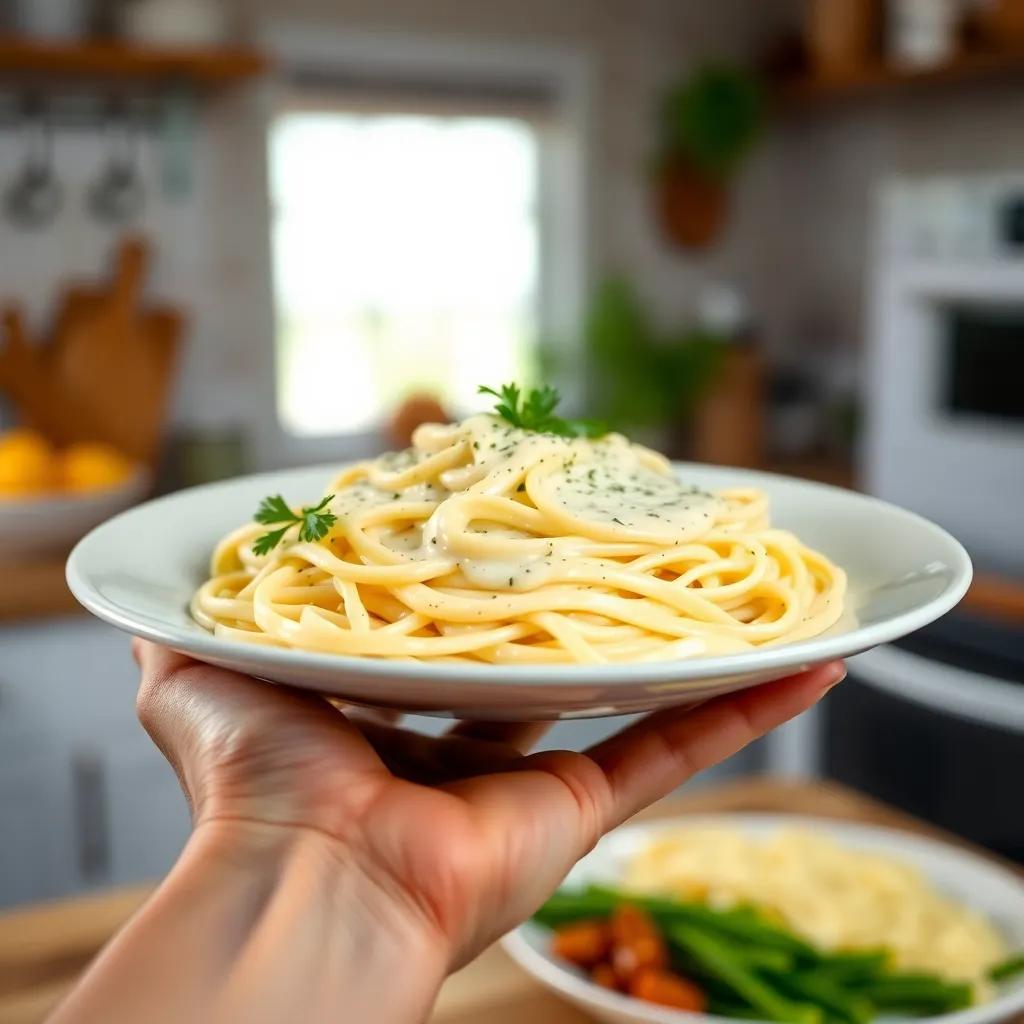
Tips & Variations
To elevate your Creamy Fettuccine Alfredo from simply good to truly memorable, a few insider tips and creative twists can make all the difference. First, when whisking the Parmesan cheese into the sauce, add it slowly over low heat to prevent clumping and ensure that ultra-smooth, glossy texture we all crave. If the sauce feels too thick or stiff, don’t hesitate to incorporate reserved pasta water a tablespoon at a time—this starchy liquid is magical for loosening the sauce while preserving creaminess and helping it cling perfectly to every noodle.
For customizing this classic, consider layering in complementary flavors or textures. A handful of sautéed mushrooms or caramelized onions adds an earthy depth, while a sprinkle of nutmeg or a touch of white pepper can give a subtle warmth that gently enhances the richness without overpowering it. Fresh herbs like basil or tarragon can provide a fragrant lift, or experiment with finishing the dish with a drizzle of truffle oil for a luxurious touch.
If you want to boost protein, grilled chicken or seared shrimp pair beautifully and transform the dish into a satisfying entrée. Vegetarians might appreciate steamed asparagus or roasted cherry tomatoes stirred in for a fresh contrast to the creamy sauce.
Accommodating dietary preferences is easier than you might think: to make a gluten-free Alfredo, swap out traditional fettuccine for a high-quality gluten-free pasta—just keep an eye on cooking times as these can vary. For a vegan version, replace heavy cream with full-fat coconut milk or cashew cream, and substitute butter with a plant-based alternative. Nutritional yeast can stand in for Parmesan, providing a cheesy flavor—though the texture will be less silky and a bit lighter overall. Keep in mind the sauce might need gentle simmering to thicken adequately without cheese.
Lastly, don’t be afraid to reinvent portions of the recipe depending on your mood or occasion. For a lighter take, reduce the butter slightly and balance cream with milk, or incorporate cauliflower purée into the sauce for creaminess without extra calories. On the flip side, for a decadent feast, finishing with a handful of shredded mozzarella or Fontina cheese blended into the sauce creates an irresistibly gooey experience.
With these tips and variations, your Alfredo becomes a versatile canvas—ready to suit simple weeknight dinners or impress guests with elegant customization. The key is embracing the dish’s rich foundation and making it your own, one creamy bite at a time.
Leftovers & Storage
After enjoying your creamy Fettuccine Alfredo, it’s natural to wonder how best to keep the leftovers fresh and delicious for another meal. Because Alfredo sauce is rich and dairy-based, proper storage is essential to preserve its luscious texture and avoid separation.
To store your leftovers, first allow the pasta to cool slightly at room temperature, but don’t leave it out longer than two hours to prevent bacterial growth. Transfer the fettuccine and sauce into an airtight container—glass containers with tight-fitting lids work wonderfully, as they don’t absorb odors and help maintain freshness. If glass isn’t available, BPA-free plastic containers are a good alternative.
Once stored properly, refrigerated leftovers will stay good for up to 3-4 days. When you’re ready to reheat, take care to warm it gently to prevent the sauce from breaking or curdling. The best method is to reheat over low heat on the stove, adding a splash of milk or reserved pasta water to loosen the sauce and restore its creamy consistency. Alternatively, warm it slowly in the microwave in short bursts, stirring between intervals, while adding a bit of liquid if needed.
If you wish to keep your Alfredo longer, freezing is an option though not ideal due to the cream and cheese. To freeze, portion the pasta into freezer-safe containers or heavy-duty zip-top bags, removing as much air as possible. Label with the date and use within 1-2 months for optimal flavor. Thaw overnight in the refrigerator before gently reheating as described above. Note that freezing may cause slight changes in texture, making the sauce a bit grainier, but careful reheating helps minimize this.
Leftover Fettuccine Alfredo also makes for convenient meal prep. Divide the pasta into individual servings in reusable containers, making packing lunches or quick dinners hassle-free. To freshen it up at mealtime, reheated Alfredo pairs well with a sprinkle of fresh herbs, extra Parmesan, or a twist of cracked black pepper—simple touches that revive its vibrant flavor.
In summary, store leftovers in airtight containers in the fridge for up to four days, handle reheating with care to keep the sauce silky, and freeze only when necessary, expecting minor textural shifts. With these tips, you can enjoy your creamy masterpiece beyond the first serving without sacrificing the indulgent qualities that make Fettuccine Alfredo such a beloved classic.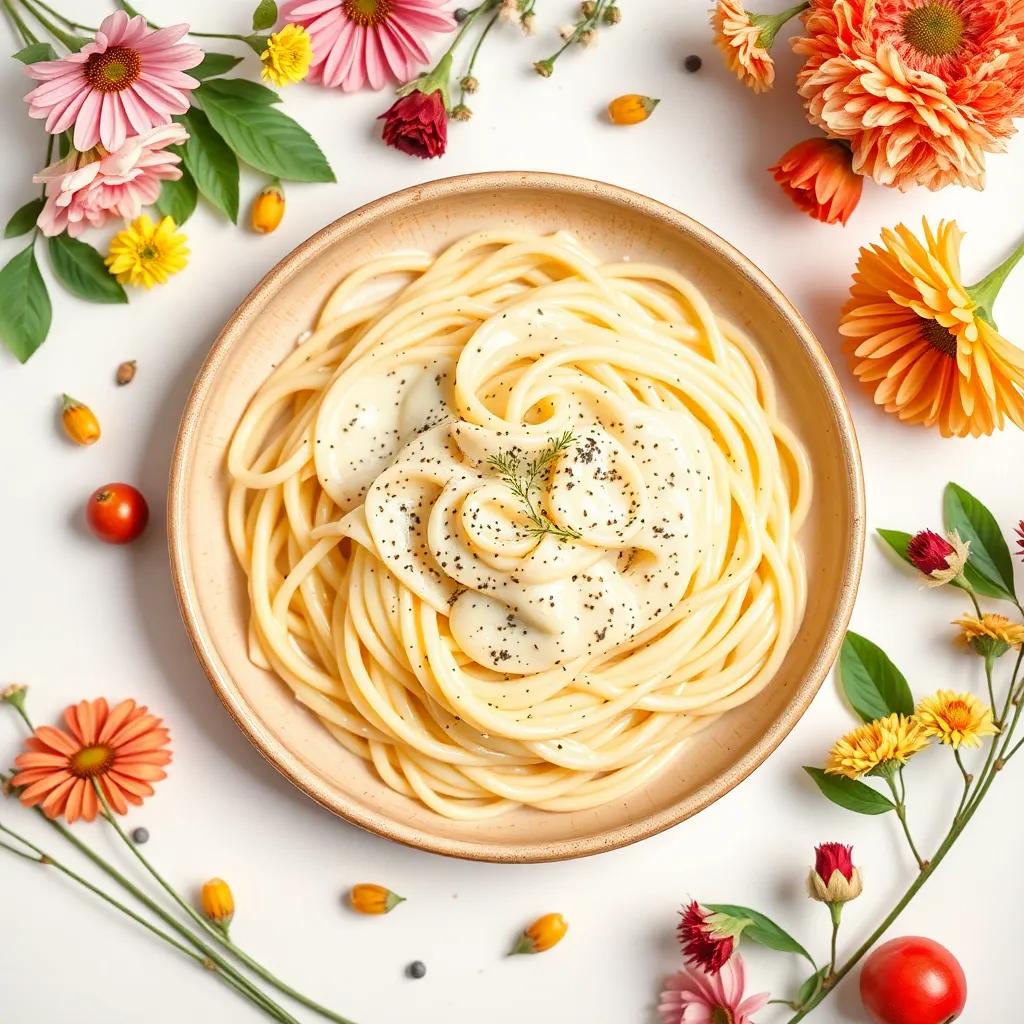
Behind the Recipe
Creamy Fettuccine Alfredo is more than just a comforting pasta dish—it carries a rich culinary history wrapped in Italian tradition and a touch of Hollywood glamour. The origins of Alfredo sauce trace back to early 20th-century Rome, where Alfredo di Lelio invented the dish as a simple yet indulgent meal to tempt his wife’s appetite during pregnancy. His blend of butter, Parmesan, and pasta quickly captured hearts, especially after American tourists discovered it and brought the recipe back home. Over time, it evolved into the velvety, cream-enriched sauce many now associate with Italian-American cuisine.
What’s fascinating about this dish is how it exemplifies Italian simplicity at its best: a handful of quality ingredients prepared with care to create a rich, satisfying experience. Traditionally, the original Alfredo sauce contained no cream at all—just butter and cheese emulsified with pasta water to form a silky coating. The addition of heavy cream became popularized later, especially outside Italy, to intensify the sauce’s richness and ease of preparation.
On a personal note, many home cooks cherish Fettuccine Alfredo as a go-to for celebrations or cozy weekends, thanks to its straightforward technique and consistently impressive results. It often brings back memories of family dinners or special occasions where everyone gathered around the table, sharing not just food but stories and laughter. This recipe, in particular, aims to honor that spirit—keeping the method accessible for cooks of all levels while preserving the creamy indulgence that has made Alfredo a timeless favorite.
Understanding the story behind the dish adds a layer of appreciation with every creamy forkful. It reminds us that great cooking often comes down to kindness and simplicity: a gesture of care wrapped in butter and cheese, inviting everyone to slow down and savor a little luxury in everyday life.
FAQ
Can I use a different type of pasta instead of fettuccine?
Is there a way to make this recipe lighter or dairy-free?
How do I store and reheat leftovers without losing creaminess?
Can I add protein or veggies to make this a complete meal?
What’s the best type of cheese to use for authentic Alfredo flavor?
How long does the sauce take to thicken, and what if it seems too thin?
Bon Appétit!
There’s something undeniably comforting about a plate of creamy fettuccine Alfredo — rich, velvety sauce wrapped around perfectly tender pasta, making every bite feel like a little celebration. This easy recipe captures that classic indulgence without any fuss, inviting both beginners and seasoned cooks to whip up a delicious meal that’s sure to satisfy.
If you decide to give this recipe a try, we’d love to hear how it turned out! Drop a comment, share your favorite tweaks, or leave a rating to let others in on your experience. After all, the best dishes are the ones that bring people together—and your personal touch might be the next unforgettable twist!

